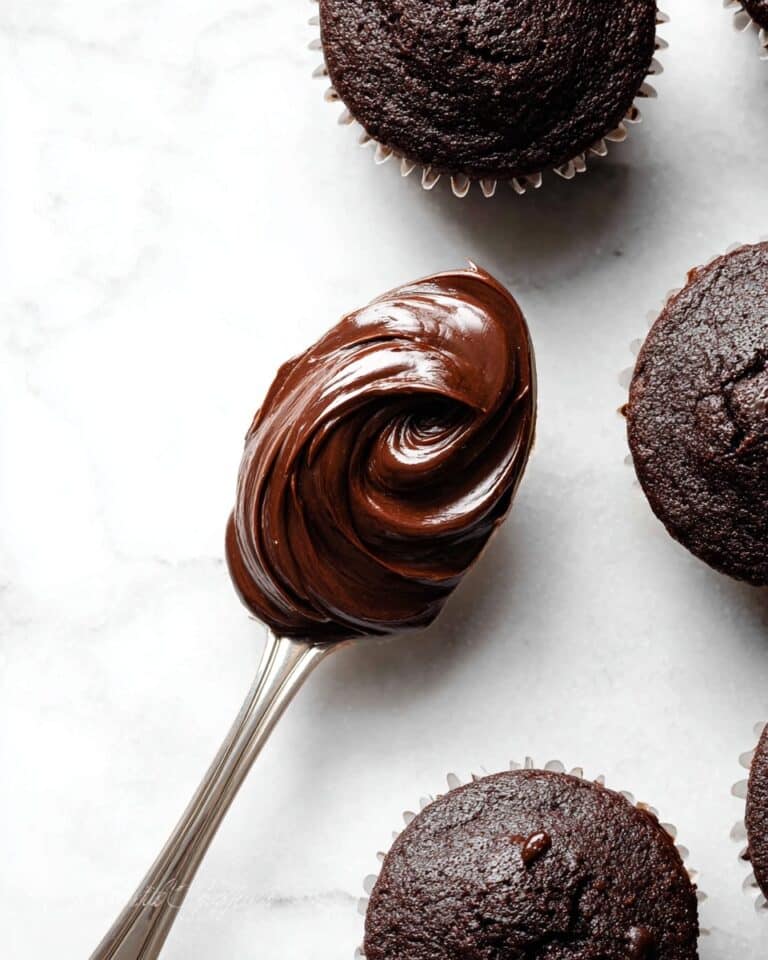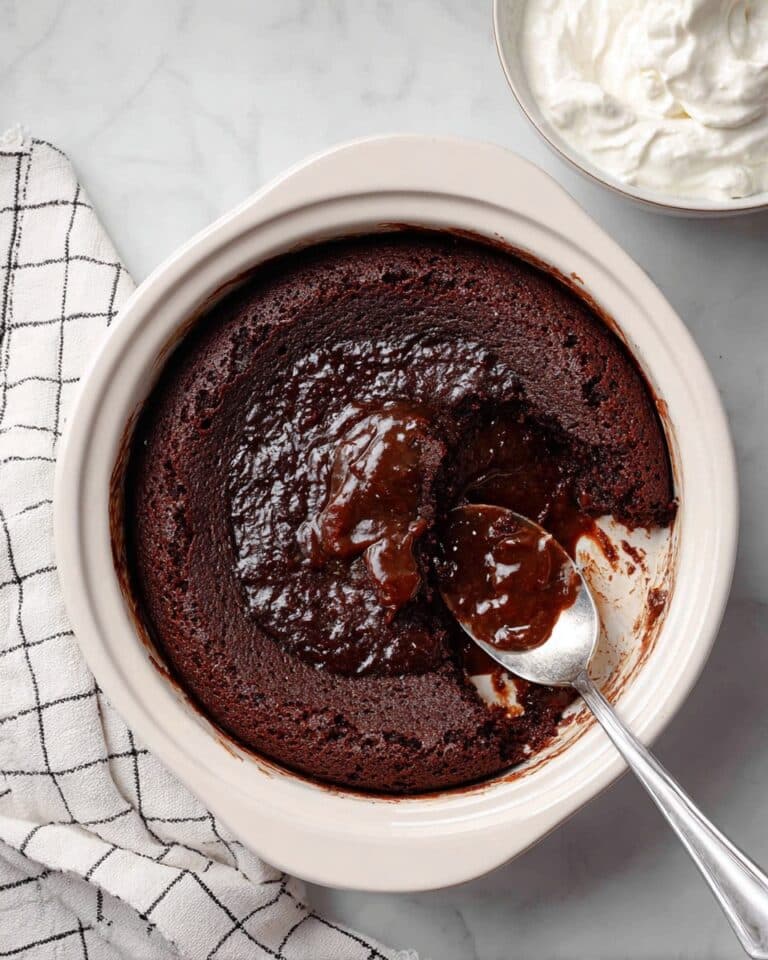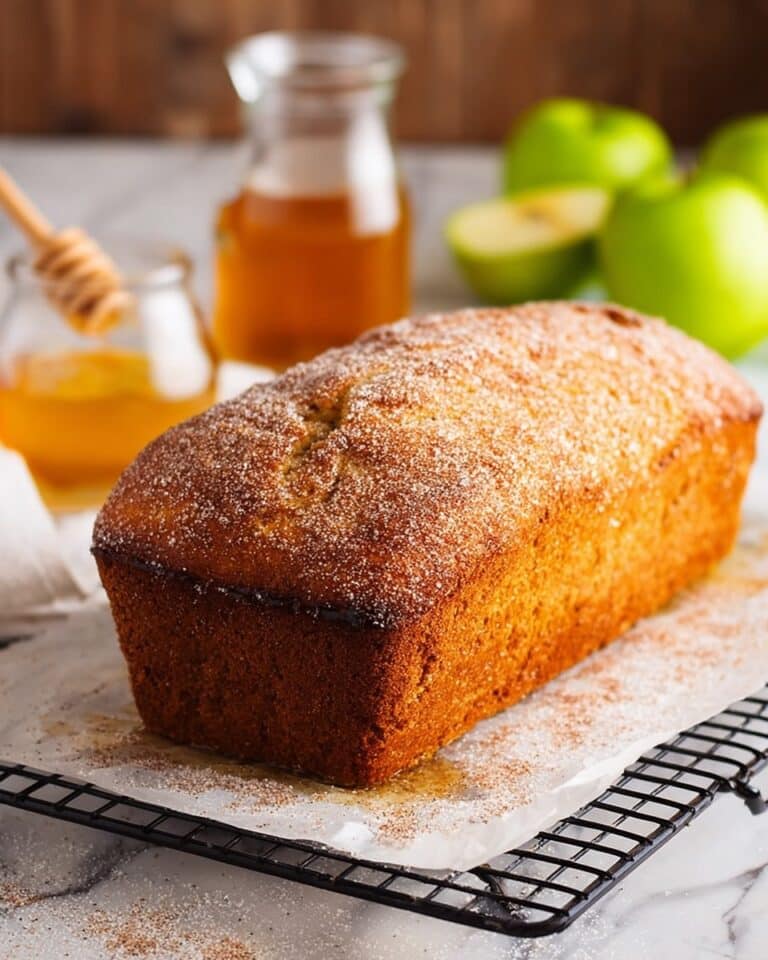New Orleans-Style Beignets Recipe
If you’ve ever wandered through the vibrant streets of the French Quarter, you know there’s nothing quite like biting into pillowy, sweet, and satisfying New Orleans-Style Beignets. These golden, fluffy pockets of joy are a beloved treat that perfectly blend a crisp outside with a soft, airy inside. Making New Orleans-Style Beignets at home might sound intimidating, but with a few simple ingredients and some patience, you’ll be whipping up these classic treats that bring a little taste of Louisiana magic straight to your kitchen.
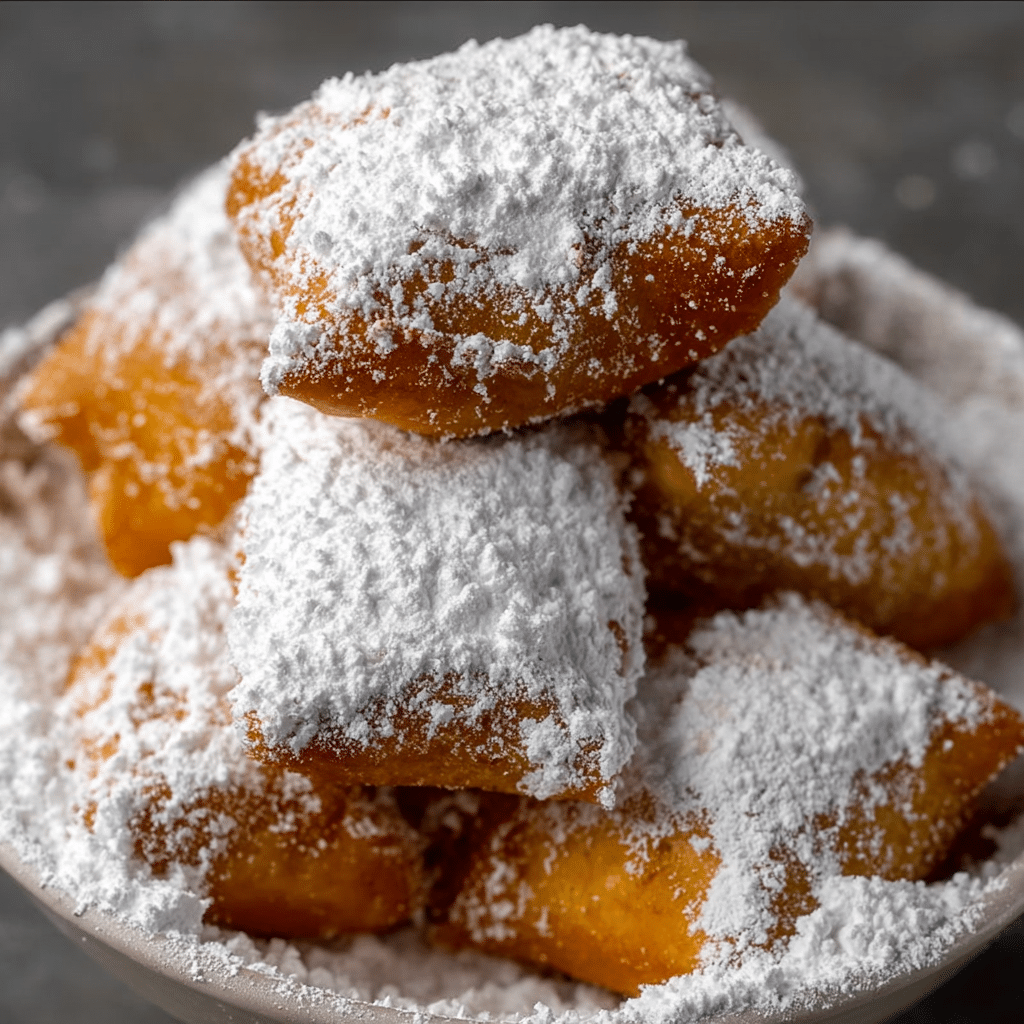
Ingredients You’ll Need
Each ingredient in this recipe plays a crucial role in building the perfect texture and rich flavor of your beignets. From the yeast that helps them puff just right to the butter that adds subtle richness, these essentials create that tender, melt-in-your-mouth experience every time.
- Warm water (1 and 1/2 cups, 110-115°F): Activates the yeast gently without killing it.
- Granulated sugar (2/3 cup): Feeds the yeast and adds a subtle sweetness.
- Active dry yeast (2 and 1/4 teaspoons): The magic behind the fluffy rise.
- Large eggs (2, room temperature): Provides structure and richness.
- Evaporated milk (1 cup): Adds a creamy depth and tender crumb.
- Pure vanilla extract (2 and 1/2 teaspoons): Infuses a warm, fragrant note.
- Bread flour (7 cups): High gluten content gives elasticity and a chewy bite.
- Salt (1 and 1/2 teaspoons): Balances sweetness and enhances flavor.
- Unsalted butter (5 tablespoons, room temperature): Adds richness and moisture.
- Peanut oil (4 cups, for frying): Ideal for deep frying with a high smoke point and neutral flavor.
- Confectioners’ sugar (2 cups): For that signature snowy dusting that makes beignets irresistible.
How to Make New Orleans-Style Beignets
Step 1: Activate the Yeast
Start by mixing the warm water, sugar, and active dry yeast in a bowl. Whisk everything together and let it rest for about 10 minutes until the mixture becomes bubbly and foamy. This shows that the yeast is alive and ready to work its magic in making your beignets rise beautifully.
Step 2: Combine Wet Ingredients and Flour
In a stand mixer fitted with a paddle attachment, beat the eggs until smooth, then add vanilla extract and evaporated milk, blending everything into a velvety mix. Slowly incorporate 3 and 1/2 cups of bread flour, adding the yeast mixture carefully at low speed to avoid splashes. This step starts forming your dough’s structure.
Step 3: Add Butter and Finish Dough
Beat in the softened butter until fully incorporated for a tender crumb, then add the salt and the remaining flour. Continue beating until the dough is smooth and cohesive, about 2 minutes. This ensures a well-developed dough that will give you those signature fluffy beignets.
Step 4: Chill the Dough
Cover the dough tightly with plastic wrap and refrigerate for at least 2 hours, or up to 24 hours. This resting period is essential for flavor development and makes the dough easier to roll out later.
Step 5: Prepare for Frying
Line a baking sheet with multiple layers of paper towels to absorb excess oil. Heat 4 inches of peanut oil in a large, heavy-bottomed pan to 360°F—a perfect temperature to ensure a crisp, golden crust without greasiness.
Step 6: Cut and Fry the Beignets
Turn the dough onto a lightly floured surface and roll it out to about 1/4-inch thickness. Cut the dough into 2 and 1/2-inch squares, then carefully fry in batches. Each piece will puff up quickly and brown within about a minute. Use a slotted spoon to transfer the beignets onto the paper towels, allowing them to drain beautifully.
Step 7: Dust and Serve
Generously dust your warm beignets with confectioners’ sugar—the final touch that makes these treats so wonderfully indulgent. Serve them fresh and watch your guests delight in every bite.
How to Serve New Orleans-Style Beignets
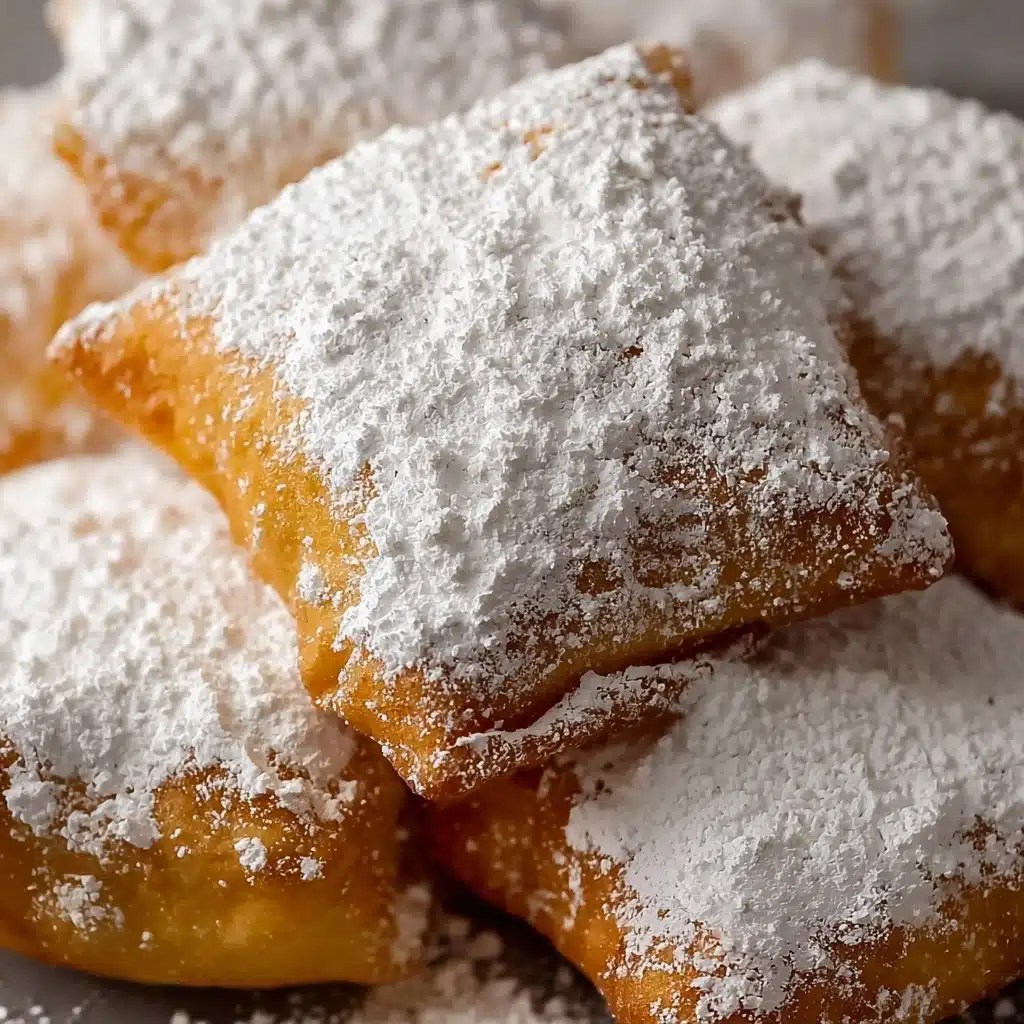
Garnishes
The iconic finish for New Orleans-Style Beignets is a heavy sprinkle of confectioners’ sugar. Beyond that, you can experiment with a dusting of cinnamon or even a drizzle of chocolate or caramel sauce for extra flair. A side of fresh berries or fruit preserves also makes for an irresistible pairing that balances sweetness and brightness.
Side Dishes
Traditionally, hot beignets are best enjoyed with a strong cup of chicory coffee or a creamy café au lait to complement their richness. For a hearty breakfast or brunch vibe, serve alongside scrambled eggs, crispy bacon, or a fresh fruit salad to balance out the indulgence perfectly.
Creative Ways to Present
Try stacking your beignets in a pyramid for a dramatic centerpiece dusted with powdered sugar and adorned with edible flowers. Serve in rustic baskets lined with colorful cloth napkins for a charming, casual look. For a fun twist, fill beignets with sweet fillings like cream cheese, fruit jams, or Nutella before frying, then dust with sugar for a delightful surprise inside every bite.
Make Ahead and Storage
Storing Leftovers
If you have any New Orleans-Style Beignets left after the first round (which is rare), store them in an airtight container at room temperature for up to one day. Because they’re best fresh, the texture might lose a bit of its crispness, but they remain delicious.
Freezing
For longer storage, you can freeze cooled beignets in a single layer on a baking sheet before transferring them to a zip-top freezer bag. They freeze well for up to a month, allowing you to enjoy that New Orleans charm anytime you crave it.
Reheating
Reheat frozen beignets in a 350°F oven for about 5 to 7 minutes to restore their crisp exterior and warm interior. Avoid microwaving as it can make them chewy or soggy. After reheating, add a fresh dusting of confectioners’ sugar for that signature look and taste.
FAQs
Can I use all-purpose flour instead of bread flour?
You can substitute all-purpose flour, but bread flour’s higher protein content helps create the chewy texture that New Orleans-Style Beignets are known for. Using bread flour will give you a better rise and pleasant chewiness.
Is peanut oil necessary for frying?
Peanut oil is ideal because of its high smoke point and neutral flavor, but you can use other oils like vegetable or canola oil if necessary. Just ensure the oil heats evenly to avoid greasy beignets.
Can this dough be made without a stand mixer?
Absolutely! You can mix and knead the dough by hand—it just requires a bit more elbow grease. The key is to achieve a smooth, cohesive dough without overworking it.
Why is the dough refrigerated before frying?
Chilling slows fermentation, enhances flavor, and firms up the dough, making it easier to roll out and cut without sticking or tearing.
How do I know when the oil is the right temperature?
Use a deep-fry thermometer to maintain 360°F. If you don’t have one, drop a small piece of dough into the oil—if it bubbles and rises immediately without burning, the oil is ready.
Final Thoughts
Making New Orleans-Style Beignets at home is such a rewarding experience that fills your kitchen with inviting aromas and your heart with a little Southern joy. Whether you’re sharing them with friends or indulging solo, these beignets are sure to become a treasured favorite. Don’t hesitate to dive into this recipe and create your own sweet New Orleans tradition!
Print
New Orleans-Style Beignets Recipe
- Total Time: 2 hours 35 minutes
- Yield: About 24 beignets 1x
- Diet: Vegetarian
Description
This classic New Orleans-Style Beignets recipe offers light, fluffy, and irresistibly golden fried dough squares dusted generously with powdered sugar. Perfect as a breakfast treat or sweet snack, these beignets capture the iconic flavors of the French Quarter with a tender interior and crisp exterior.
Ingredients
Wet Ingredients
- 1 1/2 cups warm water (110-115°F)
- 2 large eggs, at room temperature
- 1 cup evaporated milk
- 2 1/2 teaspoons pure vanilla extract
- 5 tablespoons unsalted butter, at room temperature
Dry Ingredients
- 2/3 cup granulated sugar
- 2 1/4 teaspoons active dry yeast
- 7 cups bread flour
- 1 1/2 teaspoons salt
For Frying and Serving
- 4 cups peanut oil, for deep frying
- 2 cups confectioners’ sugar (powdered sugar), for dusting
Instructions
- Activate yeast mixture: In a medium-size bowl, whisk together the warm water, sugar, and yeast. Let it sit for about 10 minutes, until the mixture becomes bubbly and foamy, indicating the yeast is active.
- Prepare the dough: In a stand mixer fitted with the paddle attachment, beat the eggs until smooth. Incorporate the vanilla extract and evaporated milk. Gradually beat in 3 1/2 cups of bread flour until smooth. With the mixer on low, slowly add the foamy yeast mixture to avoid splashing. Next, add softened butter and mix until fully incorporated. Finally, add the remaining 3 1/2 cups flour along with salt; beat until a smooth, cohesive dough forms, about 2 minutes.
- Chill the dough: Cover the mixing bowl tightly with plastic wrap and refrigerate the dough for at least 2 hours, or up to 24 hours, to develop flavor and texture.
- Prepare for frying: Line a large rimmed baking sheet with three layers of paper towels to absorb excess oil. Remove dough from refrigerator and turn out onto a lightly floured surface.
- Shape the beignets: Roll the dough out into a rectangle about 1/4-inch thick. Cut the dough into 2 1/2-inch squares for uniform frying.
- Heat oil and fry: Heat peanut oil in a large enameled cast-iron pan to 360°F, ensuring a 4-inch depth. Fry the dough squares in batches until puffy and golden brown, about 1 minute per batch. Use a slotted spoon to transfer the beignets onto the prepared paper towel-lined baking sheet to drain excess oil.
- Serve: Immediately dust the hot beignets generously with confectioners’ sugar. Serve fresh and enjoy the authentic New Orleans taste.
Notes
- Use bread flour for the best chewy texture and rise.
- Make sure the water is warm but not too hot to not kill the yeast.
- Chilling the dough improves the flavor and makes it easier to handle.
- Peanut oil is recommended for frying because of its high smoke point and neutral flavor.
- Serve beignets fresh and hot for the best experience; they lose texture after cooling.
- If you do not have evaporated milk, whole milk can be used as a substitute.
- Be careful when frying as hot oil splatters; use a thermometer to maintain consistent temperature.
- Prep Time: 15 minutes
- Cook Time: 20 minutes
- Category: Dessert, Breakfast
- Method: Deep Frying
- Cuisine: Creole, Southern US
Nutrition
- Serving Size: 2 beignets (approx. 70g)
- Calories: 320 kcal
- Sugar: 12 g
- Sodium: 210 mg
- Fat: 14 g
- Saturated Fat: 5 g
- Unsaturated Fat: 7 g
- Trans Fat: 0 g
- Carbohydrates: 43 g
- Fiber: 1.5 g
- Protein: 5 g
- Cholesterol: 55 mg
Keywords: New Orleans Beignets, French Quarter Beignets, Fried Dough, Classic Beignets, Breakfast Pastry

